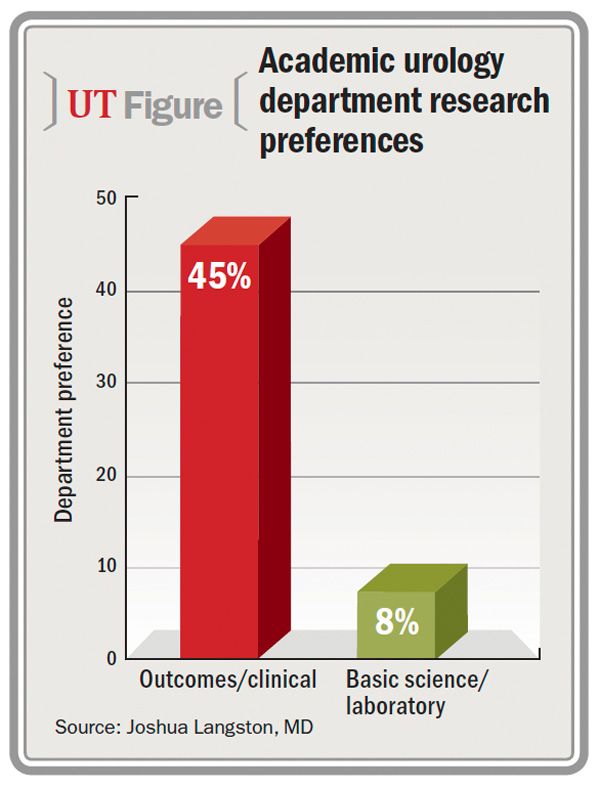Article
High demand for academic urology positions, according to survey
Results from a survey of members of the Society of University Urologists (SUU) highlight the current work force shortage in academic urology and provide information that is instructive for both academicians and urologists-in-training who are planning their career, said Joshua Langston, MD, at the 2013 American College of Surgeons Clinical Congress in Washington.
Washington-Results from a survey of members of the Society of University Urologists (SUU) highlight the current work force shortage in academic urology and provide information that is instructive for both academicians and urologists-in-training who are planning their career, said Joshua Langston, MD, at the 2013 American College of Surgeons Clinical Congress in Washington.
“Existing within the projected work force shortages in urology is specific concern about the quality and sustainability of our academic work force. The findings from our survey help leaders in academia understand the existing needs, as well as assess the impact of clinical trends, such as robotics, and health care reform pressures on the future of academic practice,” said Dr. Langston, the study’s first author and chief urology resident at the University of North Carolina, Chapel Hill.
“In addition, the survey results provide a broader view of the opportunities and qualifications being sought for academic positions. Such information should be useful to residents who may otherwise have a limited perspective based on their personal single-institution experience,” added Dr. Langston, who worked on the research with Raj S. Pruthi, MD, Culley Carson, III, MD, and colleagues.

Aspects of academic hiring practices were investigated in a 10-question electronic survey that was sent to the 393 members of the SUU. A total of 119 surveys (30%) were completed, and all eight AUA regions were well represented among the respondents.
Overall, the survey data indicated a high demand for faculty positions, and it generated some expected and some surprising findings about candidate qualifications, Dr. Langston said.
Of the 119 respondents, 94 (79%) indicated their institution was actively recruiting faculty, and about one-fourth of those were seeking to fill multiple positions while another 12% had recently filled a department vacancy. Fellowship training was sought for about three-fourths of open positions.
Not unexpectedly, individuals with subspecialty training in female urology and neurourology topped the list of vacancies (32%), and there was also high demand for individuals with subspecialty training in pediatrics and oncology (28% each). Interestingly, a high proportion of vacancies (31%) were for general urologists.
The survey results also showed generally high interest in robotic surgery capabilities. However, such skill was considered not at all important for 22% of the vacancies and only somewhat important in the hiring decision for another 35% of positions.
“These data confirm the strength of the movement toward robotic surgery. However, perhaps the message for individuals who may be considering a career in academia is that there are jobs where robotic training is important, but also plenty of opportunities where it is not critical,” said Dr. Langston.
More hiring for clinical-track posts
Consistent with the evolution in academic staffing described elsewhere, more departments were hiring for clinical-track rather than tenure-track positions. Only 14% of departments were offering only a tenure-track position, whereas about half were offering either clinical- or tenure-track positions, and 37% were hiring for clinical track only.
Rounding out its snapshot of academic practice, the data confirmed an increasing crunch on protected research time, with the majority of positions (85%) including 1 day or less of protected research time per week. Departments did show a distinct preference for outcomes/clinical research interest over a basic science/laboratory focus (45% vs. 8%), though a substantial number (39%) did not feel that the specific research interest was a factor in the hiring decision.
“This study adds to a growing body of work by Dr. Pruthi and others addressing the work force issues in our field,” Dr. Langston said.UT
Subscribe to Urology Times to get monthly news from the leading news source for urologists.





